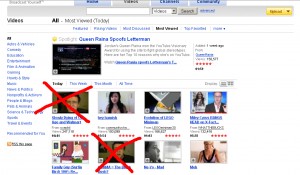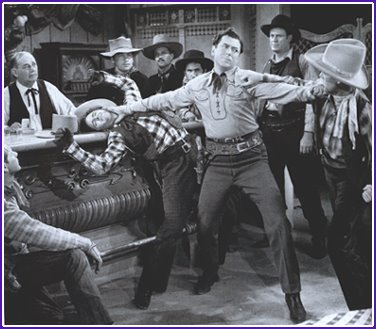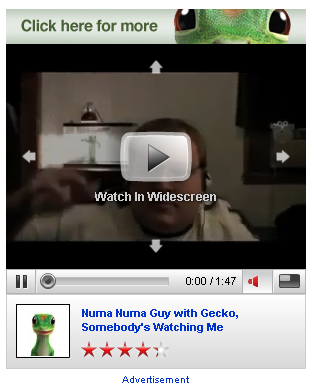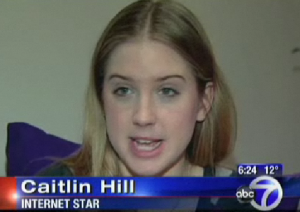hot off the press…
 A YouTube for All of Us
A YouTube for All of Us
As a community, we have come to count on each other to be entertained, challenged, and moved by what we watch and share on YouTube. We’ve been thinking a lot lately about how to make the collective YouTube experience even better, particularly on our most visited pages. Our goal is to help ensure that you’re viewing content that’s relevant to you, and not inadvertently coming across content that isn’t. Here are a few things we came up with:
* Stricter standard for mature content – While videos featuring pornographic images or sex acts are always removed from the site when they’re flagged, we’re tightening the standard for what is considered “sexually suggestive.” Videos with sexually suggestive (but not prohibited) content will be age-restricted, which means they’ll be available only to viewers who are 18 or older. To learn more about what constitutes “sexually suggestive” content, click here.
* Demotion of sexually suggestive content and profanity – Videos that are considered sexually suggestive, or that contain profanity, will be algorithmically demoted on our ‘Most Viewed,’ ‘Top Favorited,’ and other browse pages. The classification of these types of videos is based on a number of factors, including video content and descriptions. In testing, we’ve found that out of the thousands of videos on these pages, only several each day are automatically demoted for being too graphic or explicit. However, those videos are often the ones which end up being repeatedly flagged by the community as being inappropriate.
* Improved thumbnails – To make sure your thumbnail represents your video, your choices will now be selected algorithmically. You’ll still have three thumbnails to choose from, but they will no longer be auto-generated from the 25/50/75 points in the video index.
* More accurate video information – Our Community Guidelines have always prohibited folks from attempting to game view counts by entering misleading information in video descriptions, tags, titles, and other metadata. We remain serious about enforcing these rules. Remember, violations of these guidelines could result in removal of your video and repeated violations will lead to termination of your account.
The preservation and improvement of the YouTube experience is a responsibility we share. Let’s work together to ensure that the YouTube community continues to thrive as a positive place for all of us.
The YouTube Team
…
Brief Editorial:
by Zack Scott
1. Why should videos be demoted on profanity alone? Why not just hide them for people not logged in and are 18 or older?
2. Some of YouTube‘s most popular stars…Bo Burnham, Charles Trippy, sXePhil, Chris Crocker, Mark Day, etc…(name as many as you want) all have used profanity.
3. The new thumbnail idea sucks. Now what if none of the thumbnails are good?
4. YouTube sometimes features videos with profanity.
—————–
 OK, now I finally understand YouTube’s “Stricter standard for mature content”
OK, now I finally understand YouTube’s “Stricter standard for mature content”
“Videos that are considered sexually suggestive, or that contain profanity, will be algorithmically demoted on our ‘Most Viewed,’ ‘Top Favorited,’ and other browse pages.”
They must not like sXePhil.










